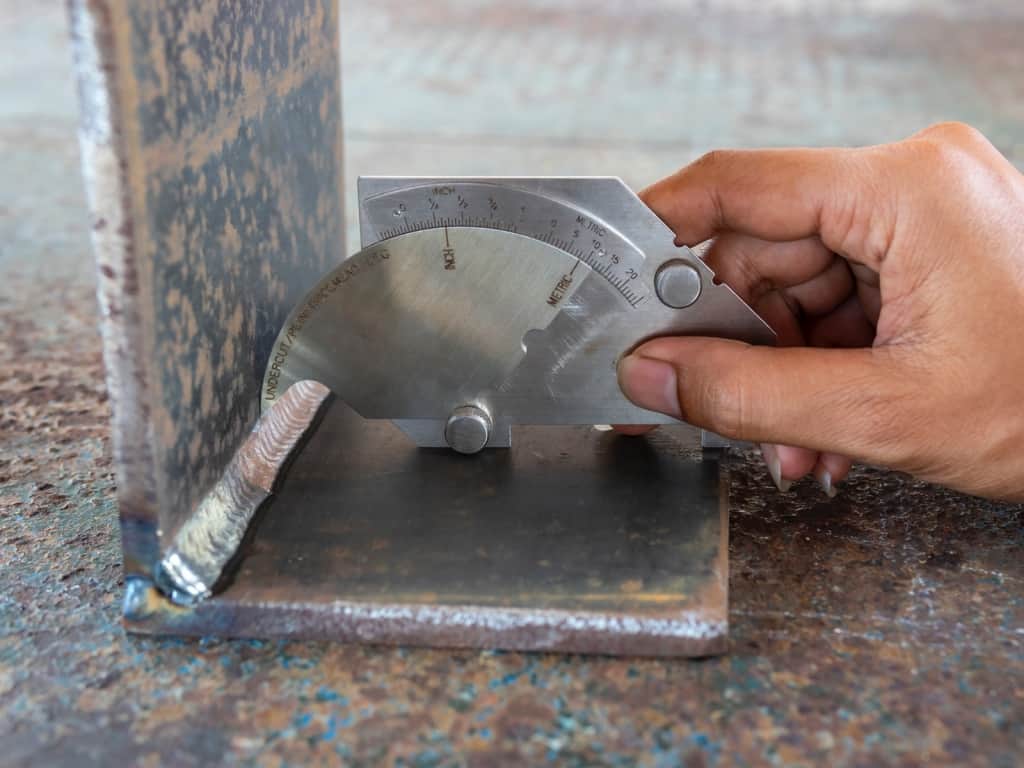Exactly How to Avoid Weld Undercut: Important Tips for Welders
Exactly How to Avoid Weld Undercut: Important Tips for Welders
Blog Article
Grasping the Art of Welding: Exactly How to Stay Clear Of Undercut Welding Issues for Flawless Construction Results
Efficiency and precision are extremely important on the planet of welding, where even the slightest imperfection can compromise the structural stability of a produced piece. One typical difficulty that welders face is undercutting, an issue that can lead and weaken a weld joint to pricey rework. By understanding the root triggers of undercut welding and applying efficient strategies to avoid it, welders can elevate their craft to new levels of quality (Preventing weld undercut). In the search of remarkable manufacture outcomes, mastering the art of welding to avoid undercut problems is not just an ability however a requirement for those striving for excellence in their job.
Recognizing Undercut Welding

To protect against undercut welding, welders ought to ensure proper welding specifications, such as changing the current, voltage, traveling speed, and maintaining the correct electrode angle. By recognizing the reasons of undercut welding and applying preventative steps, welders can attain high-grade, structurally sound welds.
Reasons of Undercut in Welding
Understanding the variables that contribute to damage in welding is crucial for welders to produce top quality, structurally audio welds. Poor welding present or inaccurate welding rate can likewise add to undercut. Recognizing these reasons and executing correct welding methods can aid stop undercutting problems, ensuring solid and resilient welds.
Strategies to stop Undercutting

To alleviate the danger of undercutting in welding, welders can employ strategic welding strategies intended at boosting the top quality and stability of the weld joints. One efficient method is to change the welding parameters, such as voltage, current, and travel speed, to make sure proper warmth input and deposition. Preserving a suitable electrode angle and ensuring constant travel rate can also assist protect against undercut. Additionally, utilizing the proper welding technique for the particular joint setup, such as weave or stringer grains, can add to reducing undercutting. Preventing weld undercut.
Additionally, appropriate joint preparation, consisting of ensuring clean base materials complimentary of contaminants and using the suitable welding consumables, is critical in stopping undercut problems. Utilizing back-step welding strategies and regulating the go to this website weld bead account can likewise help distribute warm evenly and decrease the risk of undercut. Normal inspection of the weld joint throughout and after welding, in addition to implementing quality control actions, can help in addressing and detecting undercutting concerns quickly. By executing these techniques faithfully, welders can achieve remarkable construction results with minimal undercut flaws.
Value of Proper Welding Parameters
Picking and maintaining appropriate welding criteria is necessary for attaining successful welds with marginal defects. Welding parameters describe variables such as voltage, existing, take a trip rate, electrode angle, and shielding gas circulation price that straight impact the welding process. These parameters should be carefully readjusted based on the sort of material being bonded, its thickness, and the welding technique employed.
Appropriate welding criteria ensure the ideal amount of warm is put on melt the base metals and filler material uniformly. If the parameters are set too expensive, it can cause extreme heat input, triggering distortion, burn-through, or spatter. On the various other hand, if the parameters are as well low, incomplete fusion, absence of penetration, or damaging may happen.
Quality Control in Welding Procedures

Conclusion
In verdict, mastering the art of welding needs a comprehensive understanding of undercut welding, its reasons, and strategies to stop it. By making sure proper welding criteria and executing quality control practices, flawless fabrication results can be accomplished. It is necessary for welders to continually pursue excellence in their welding procedures to avoid undercut concerns and create high-grade welds.
Undercut welding, a typical problem in welding procedures, happens when the weld metal doesn't effectively fill the groove and leaves a groove or depression along the welded joint.To prevent undercut welding, welders need to guarantee correct welding criteria, such as readjusting the present, my review here voltage, traveling speed, and maintaining the proper electrode angle. Poor welding current or inaccurate welding speed can also add to damage.To reduce the threat of undercutting in welding, welders can utilize strategic welding techniques intended at boosting the high quality and honesty of the weld joints.In verdict, mastering the art of welding needs an extensive understanding of undercut welding, its causes, and methods to avoid it.
Report this page